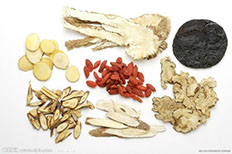

Services
Chinese Herbs
Chinese Herbal Medicine
Chinese herbal medicine is a major aspect of traditional Chinese medicine, which focuses on restoring a balance of energy, body, and spirit to maintain health rather than treating a particular disease or medical condition.
Chinese herbal medicine use thousands of medicinal substances—primarily plants, but also some minerals and animal products. Different parts of plants, such as the leaves, roots, stems, flowers, and seeds, are used. In TCM, herbs are often combined in formulas and given as teas, capsules, liquid extracts, granules, or powders
.
How is it promoted for use?
Chinese herbal medicine is different with Western (allopathic) medical diagnosis and treatment. It treats patients’ underlying causes of diseases rather than main complaints or the patterns of their symptoms. Chinese herbalists attempt to prevent and treat imbalances of body, such as those caused by cancer and other diseases, with complex combinations of herbs, minerals, and plant extracts.
Chinese herbal medicine uses a variety of herbs such as astragalus, ginkgo, ginseng, green tea, and Gouji berry in different combinations to restore balance to the body. Herbal blends are said to prevent and treat immune and endocrine system disturbances, infections, breathing disorders, and a vast number of other ailments and diseases. Some practitioners claim herbs have the power to prevent and treat a variety of types of cancer.
What is the history behind it?
Native cultures all over the world have traditionally used herbs to maintain health and treat illnesses. By 200 BC, traditional Chinese medicine was firmly established, and by the first century AD, a listing of medicinal herbs and herbal formulations and their uses had been developed in Shennong Bencao Jing and Shanghanlun.
The classic Chinese book on medicinal herbs was written during the Ming Dynasty (1152-1578) by Li Shi-Zhen. It listed nearly 2,000 herbs and extracts.
What does it involve?
Traditional Chinese herbal medicine (TCHM) makes almost exclusive use of herbal combinations. More importantly, these formulas are not designed to treat symptoms of a specific illness; rather, they are tailored specifically to the individual according to the complex principles of traditional Chinese medicine. For this reason, TCHM is potentially a deeply holistic healing approach. On the other hand, it is both more difficult to use and to study than its Western counterpart.
According to the philosophy of Chinese medicine, In an ideal state, yin and yang in all their forms are perfectly balanced in every part of the body. However, external or internal factors can upset this balance, leading to disease. Chinese medical diagnosis and treatment involves identifying the factors that are out of balance and attempting to bring them back into harmony. Diagnosis is carried out by means of “listening” to the pulse (in other words, taking the pulse with extraordinary care and sensitivity), observing and palpating various parts of the body, and asking a long series of questions.
In China, more than 3,200 herbs and 300 mineral and animal extracts are identified according to their temperature(such as warm, cold, neutral) and herbal taste like bitter, sweet, spicy and salty. Clinically, the herbs are used in more than 1000 different formulas, according to diagnosis of body imbalance. Herbal formulas may contain 4 to 12 different ingredients, to be taken in the form of teas, powders, pills, tinctures, or syrups. Chinese herbal remedies are usually made up of a number of herbs and mineral and animal extracts. Typically, 2 or 3 herbs are included to have the greatest effect on the problem being treated. Other ingredients in the formula are supposed to treat minor aspects of the problem, direct the formula to specific parts of the body, and help the other herbs work better.
Copyright - ACU HEALING 2014
This websited was designed by: RVN Studios


